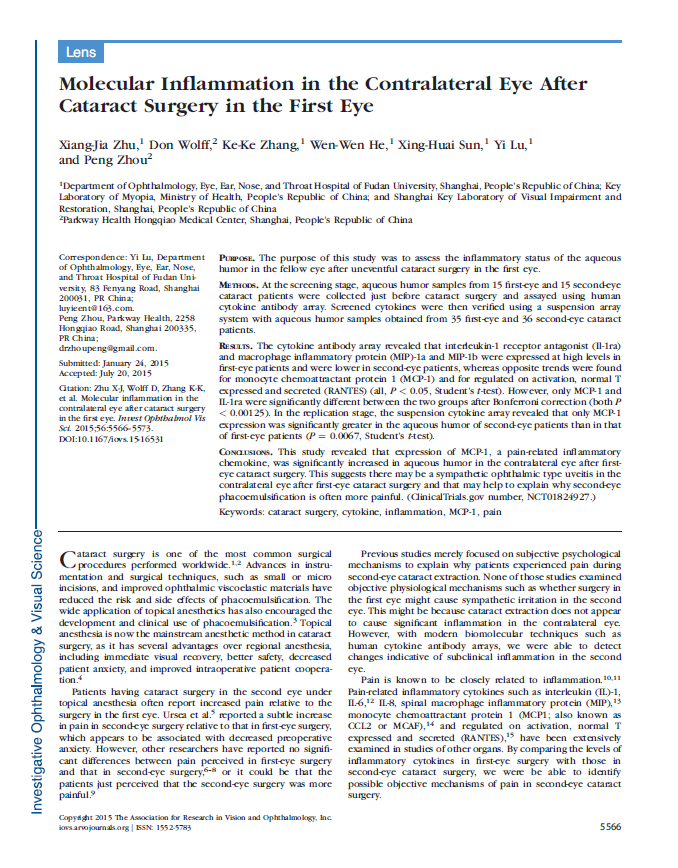
Author information
- 1
- Department of Ophthalmology Eye, Ear, Nose, and Throat Hospital of Fudan University, Shanghai, People’s Republic of China; Key Laboratory of Myopia, Ministry of Health, People’s Republic of China; and Shanghai Key Laboratory of Visual Impairment and Resto.
- 2
- Parkway Health Hongqiao Medical Center, Shanghai, People’s Republic of China.
Abstract
PURPOSE:
The purpose of this study was to assess the inflammatory status of the aqueous humor in the fellow eye after uneventful cataract surgery in the first eye.
METHODS:
At the screening stage, aqueous humor samples from 15 first–eye and 15 second-eye cataract patients were collected just before cataract surgery and assayed using human cytokine antibody array. Screened cytokines were then verified using a suspension array system with aqueous humor samples obtained from 35 first–eye and 36 second-eye cataract patients.
RESULTS:
The cytokine antibody array revealed that interleukin-1 receptor antagonist (Il-1ra) and macrophage inflammatory protein (MIP)-1a and MIP-1b were expressed at high levels in first–eye patients and were lower in second-eye patients, whereas opposite trends were found for monocyte chemoattractant protein 1 (MCP-1) and for regulated on activation, normal T expressed and secreted (RANTES) (all, P < 0.05, Student’s t-test). However, only MCP-1 and IL-1ra were significantly different between the two groups after Bonferroni correction (both P < 0.00125). In the replication stage, the suspension cytokine array revealed that only MCP-1 expression was significantly greater in the aqueous humor of second-eye patients than in that of first–eye patients (P = 0.0067, Student’s t-test).
CONCLUSIONS:
This study revealed that expression of MCP-1, a pain-related inflammatory chemokine, was significantly increased in aqueous humor in the contralateral eye after first–eye cataract surgery. This suggests there may be a sympathetic ophthalmic type uveitis in the contralateral eye after first–eye cataract surgery and that may help to explain why second-eye phacoemulsification is often more painful. (ClinicalTrials.gov number, NCT01824927.)
- PMID:
- 26305528
- DOI:
- 10.1167/iovs.15-16531